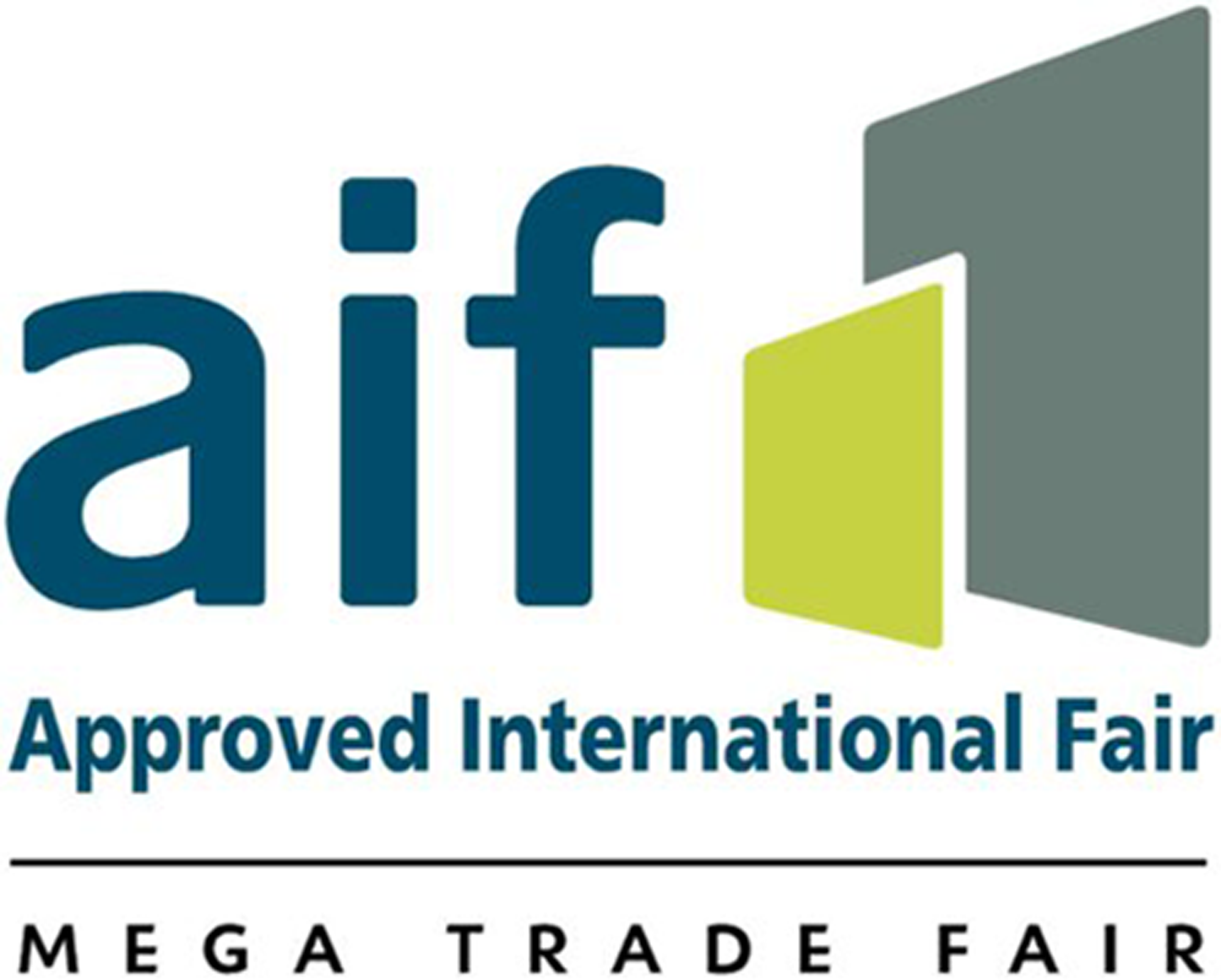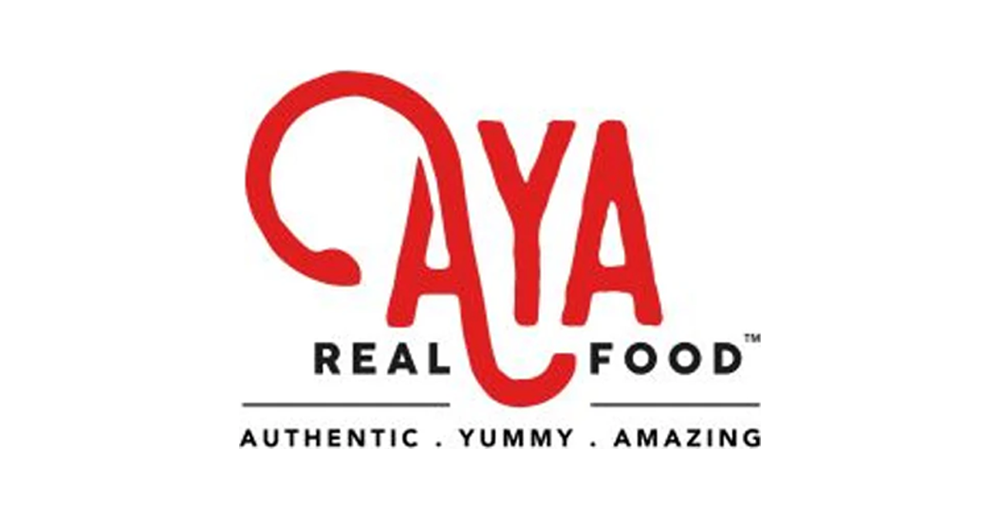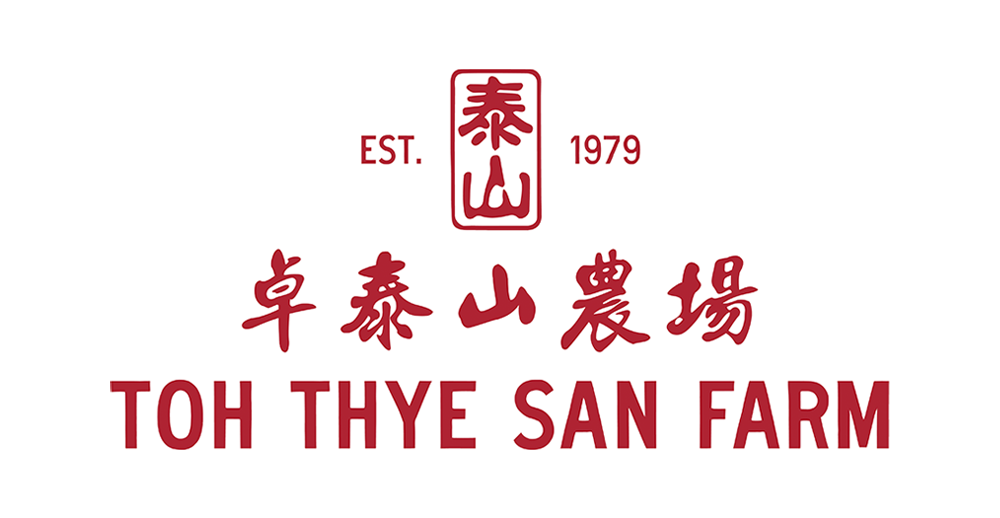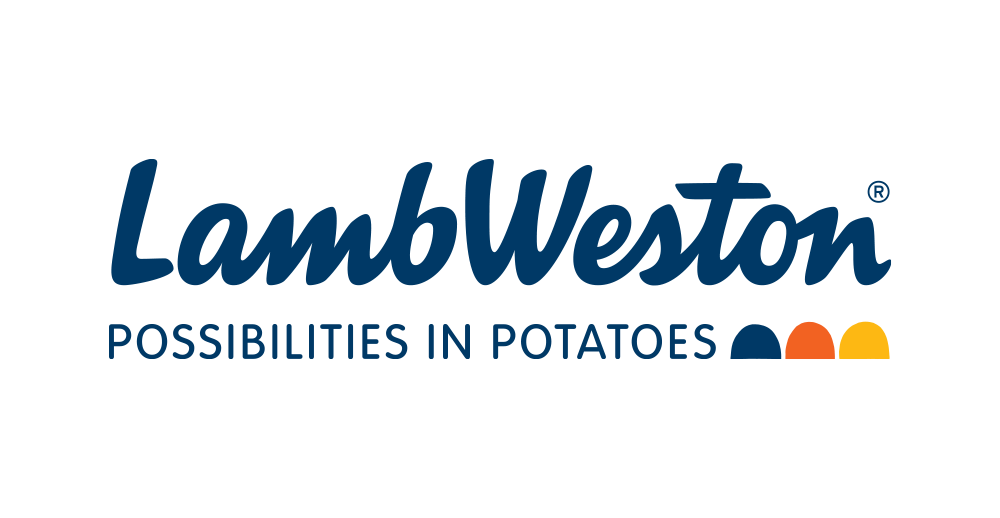In a world where health-conscious choices are on the rise, understanding food labels has become essential. With increasing rates of obesity, diabetes, and other diet-related health concerns in Southeast Asia, particularly Singapore, reading food labels is more than a skill; it’s a necessity.
Knowing how to read food nutrition labels enables individuals to manage dietary restrictions, monitor calorie intake, and identify hidden ingredients that could impact their health.
For people with specific conditions like food allergies or those seeking to lead a balanced lifestyle, reading nutrition labels is the first step toward making informed decisions.
This guide shows the process, offering actionable insights for analyzing serving sizes, calories, and ingredient lists while promoting healthier choices in an increasingly processed food sector.
What Is a Food Nutrition Label?
Food nutrition labels are the roadmap to understanding what’s inside your food. These labels provide essential information about the nutritional content and food label ingredients, empowering consumers to make healthier decisions.
A food nutrition label is a standardized panel displayed on packaged food products, detailing their nutrient composition and serving size. Its purpose is to promote transparency and help consumers align their food choices with their dietary needs.
For example, a label might highlight total calories, macronutrient breakdowns, or the presence of food additives.
In Singapore, food labeling is regulated by the Singapore Food Agency (SFA), ensuring accuracy and consistency. Labels must include nutrition information, ingredient lists, and potential allergens, making it easier for consumers to identify suitable products.
Across Southeast Asia, similar regulations enforce the standardization of types of food labels to protect public health and promote informed choices.
Key Components of a Food Nutrition Label
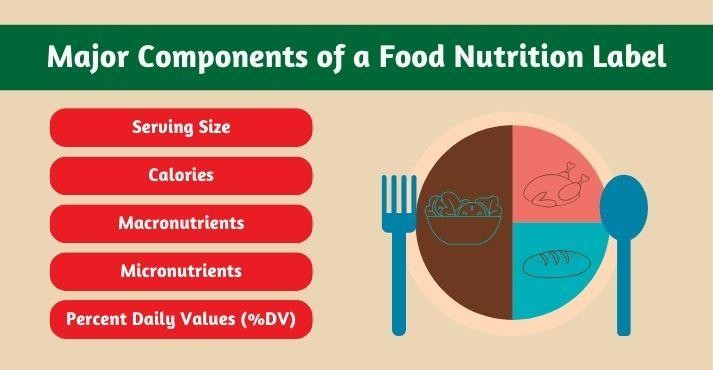
A food nutrition label contains essential information that helps consumers evaluate the nutritional value of a product. From understanding portion sizes to interpreting nutrient content, these components guide individuals in making healthier choices.
When mastering these elements, consumers can better align their food choices with dietary goals, avoid excess calories, and maintain a balanced diet.
1. Serving Size
The serving size is the foundation for interpreting the rest of the food nutrition label. It indicates the portion size used to calculate the calories, macronutrients, and micronutrients listed.
Misinterpreting serving size can lead to consuming more calories or nutrients than expected, which can derail dietary objectives.
- Example: A box of cookies may list 120 calories per serving, but if the serving size is just two cookies, eating eight cookies would mean consuming 480 calories.
- Why it matters: Many products contain multiple servings, and not accounting for this can result in inaccurate calorie and nutrient tracking.
To ensure accuracy, always compare the serving size on the label with the amount you actually consume. Products with misleading serving sizes often lead to overconsumption, making reading a food label essential for monitoring intake.
2. Calories
Calories indicate the energy content of food and are essential for maintaining energy balance. Monitoring calorie intake helps in achieving weight management and fitness goals, particularly for those managing conditions like obesity or diabetes.
- Example: A bottle of soda may list 100 calories per serving, but if the bottle contains 2.5 servings, consuming the whole bottle adds up to 250 calories.
- How to use it: Compare the calorie count on the label to your daily requirements to ensure your intake aligns with your goals.
For people aiming to lose or maintain weight, reading food labels carefully ensures that caloric intake remains within a healthy range.
Misjudging calories can lead to unintentional weight gain, highlighting the importance of paying close attention to this component when learning how to read food nutrition labels.
3. Macronutrients
Macronutrients, fats, carbohydrates, and proteins, are the building blocks of a balanced diet. Understanding their breakdown on a food nutrition label can help assess the nutritional quality of a product and its suitability for specific dietary needs.
- Fats: Includes total fats, saturated fats, and trans fats. Foods high in trans fats should be avoided, as they increase the risk of heart disease.
- Carbohydrates: Includes total carbs, fiber, and sugars. High dietary fiber promotes digestive health, while added sugars should be limited.
- Proteins: Essential for muscle repair and tissue growth, protein intake should align with physical activity levels.
For instance, a granola bar may have 15g of sugar but only 2g of fiber, making it a less ideal choice for those prioritizing complex carbs and high fiber.
4. Micronutrients
Micronutrients like vitamins and minerals are critical for preventing deficiencies and supporting overall health. Most food labels highlight key micronutrients such as Vitamin C, calcium, and iron, which play vital roles in immunity, bone health, and oxygen transport.
- Example: Fortified breakfast cereals high in iron and Vitamin D are excellent for individuals with nutrient deficiencies.
- Tip: Look for foods with higher percentages of beneficial micronutrients like calcium or potassium to support overall well-being.
When reading food labels, consumers can identify foods rich in necessary nutrients while avoiding those lacking in essential vitamins or minerals. For individuals with specific dietary needs, understanding micronutrient content is crucial for maintaining a healthy lifestyle.
5. Percent Daily Values (%DV)
The Percent Daily Values (%DV) provide a reference for how much of a nutrient a serving contributes to daily dietary needs. Based on a 2,000-calorie diet, %DV helps consumers quickly determine if a food is high or low in specific nutrients.
- Low %DV: A nutrient with 5% or less is considered low.
- High %DV: A nutrient with 20% or more is considered high.
For example, a product with 25% DV of calcium is a good source of the mineral, while one with 30% DV of sodium may require moderation.
Comparing %DV across products helps consumers make healthier choices, especially for individuals monitoring salt or sugar intake. Mastering this component is an essential part of reading a food label effectively.
Step-by-Step Guide to Reading Food Nutrition Labels
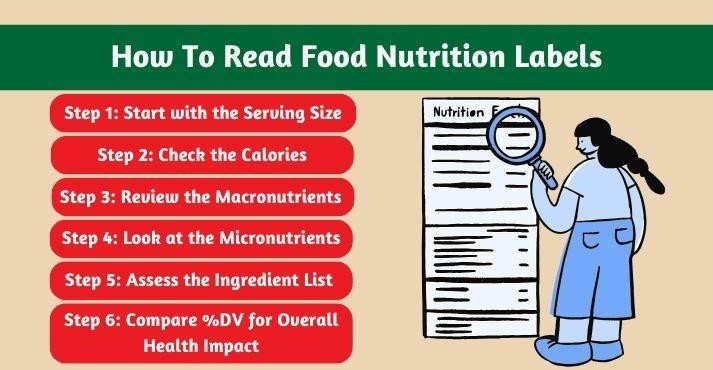
Knowing how to read food nutrition labels is a critical skill for making healthier choices. While the wealth of information on labels can seem overwhelming, breaking it into manageable steps simplifies the process.
When following this guide, you’ll gain the knowledge needed to assess calories, nutrients, and ingredients effectively.
Step 1: Start with the Serving Size
The serving size is the foundation of the food nutrition label. It determines the portion of food on which all listed nutritional values are based. Misinterpreting serving sizes can lead to inaccurate tracking of calories, fats, sugars, and other nutrients.
For example, a box of cereal may list 1 cup as the serving size. If you pour 2 cups into your bowl, you’ll need to double all the listed values, including calories, fats, and sugars. Many products appear deceptively small but contain multiple servings, making it easy to consume more than intended.
When reading a food label, always begin by comparing the serving size to the amount you plan to eat. This simple habit ensures you’re accurately assessing the food’s contribution to your daily intake, preventing unintentional overconsumption.
Step 2: Check the Calories
Calories provide a quick snapshot of the food’s energy content, helping you determine how it fits into your daily caloric needs. Calories are particularly important for weight management and energy balance, making them a key focus of the label.
For instance, a protein bar labeled 270 calories per serving may be an excellent energy source for someone with a physically active lifestyle. However, for someone with a sedentary routine, the same bar might be too calorie-dense as a snack, potentially contributing to weight gain.
To effectively use calorie information, compare it to your daily energy requirements, which vary depending on age, gender, activity level, and health goals. This step ensures that your calorie consumption aligns with your overall dietary plan.
Step 3: Review the Macronutrients (Fats, Carbs, Proteins)
Macronutrients, fats, carbohydrates, and proteins reveal the nutritional balance of a food. Knowing their breakdown is essential for assessing whether a product meets your health objectives.
- Fats: Focus on limiting saturated and trans fats, as they are associated with heart disease. Choose foods rich in healthy fats, like those from nuts or avocados, to support heart health.
- Carbohydrates: Look for whole carbohydrates with dietary fiber, which aids digestion. Minimize added sugars, which contribute to weight gain and increase the risk of diabetes.
- Proteins: Ensure adequate protein intake for muscle repair, tissue growth, and overall health.
For example, a granola bar with 12g of sugar but only 8g of protein may not be the best option for a low-sugar diet. Carefully reviewing macronutrient content when reading nutrition labels allows you to select foods that align with your dietary goals.
Step 4: Look at the Micronutrients
Micronutrients, including vitamins and minerals, are vital for overall health and preventing nutrient deficiencies. While they are needed in smaller quantities than macronutrients, their role in maintaining bodily functions is crucial.
Key micronutrients highlighted on labels often include:
- Vitamin C, which boosts immunity and supports skin health.
- Iron is essential for oxygen transport in the blood.
- Calcium, which strengthens bones and teeth.
For instance, fortified cereals high in iron and Vitamin D can be beneficial for individuals with deficiencies or those following specific diets, like vegetarians. Incorporating foods rich in these nutrients ensures a balanced diet and supports long-term health.
Step 5: Assess the Ingredient List for Hidden Sugars, Sodium, or Additives
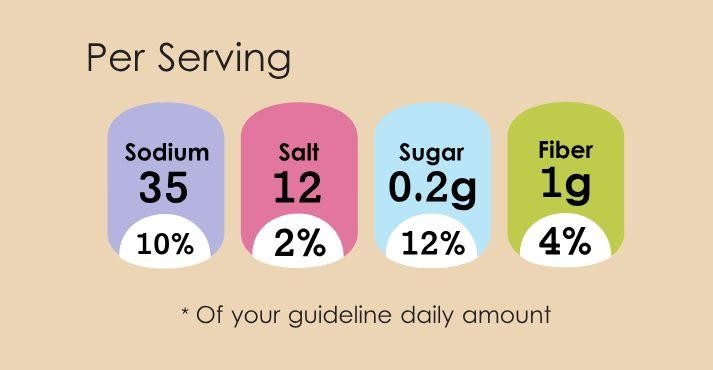
The ingredient list reveals what’s inside the product, including hidden sugars, sodium, or food additives that may impact health. Recognizing this section is key to identifying potential red flags and ensuring the food aligns with your health-conscious goals.
Look out for terms like “high fructose corn syrup,” “maltose,” or “sodium benzoate,” which indicate the presence of added sugars or preservatives.
For example, a loaf of bread might contain “sodium benzoate” as a preservative and “high fructose corn syrup” as a sweetener, making it less ideal for those prioritizing natural or low-sodium diets.
When carefully examining the ingredient list, you can avoid products with unnecessary additives or excessive sodium and prioritize natural, whole-food options.
Step 6: Compare %DV for Overall Health Impact
The Percent Daily Values (%DV) provide a reference for how much of a nutrient a serving contributes to the average daily intake. Based on a 2,000-calorie diet, %DV helps consumers assess whether a product is high or low in specific nutrients.
- A %DV of 5% or less is considered low for a nutrient, while 20% or more is considered high.
- Aim for high %DV in beneficial nutrients like calcium, fiber, or iron and low %DV in sodium and added sugars.
For example, a product with 25% DV of calcium is a good source of the mineral and can support bone health. Conversely, one with 30% DV of sodium may require moderation to avoid excessive salt intake.
Conclusion
Reading food nutrition labels is a fundamental skill for making informed and healthier dietary choices.
These labels provide a wealth of information, from serving sizes to calories, macronutrients, micronutrients, and ingredient lists, allowing consumers to evaluate how a product fits into their overall health and nutrition goals.
When mastering this skill, individuals can navigate through misleading claims, avoid hidden sugars and additives, and prioritize nutrient-dense options that support their well-being.
Food labels are more than just numbers; they represent a commitment to transparency and enable consumers to take charge of their health in an increasingly processed food landscape.
Incorporating this knowledge into everyday decision-making nurtures healthier habits, reduces the risk of chronic diseases, and contributes to long-term well-being.








